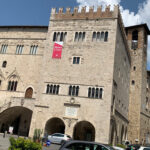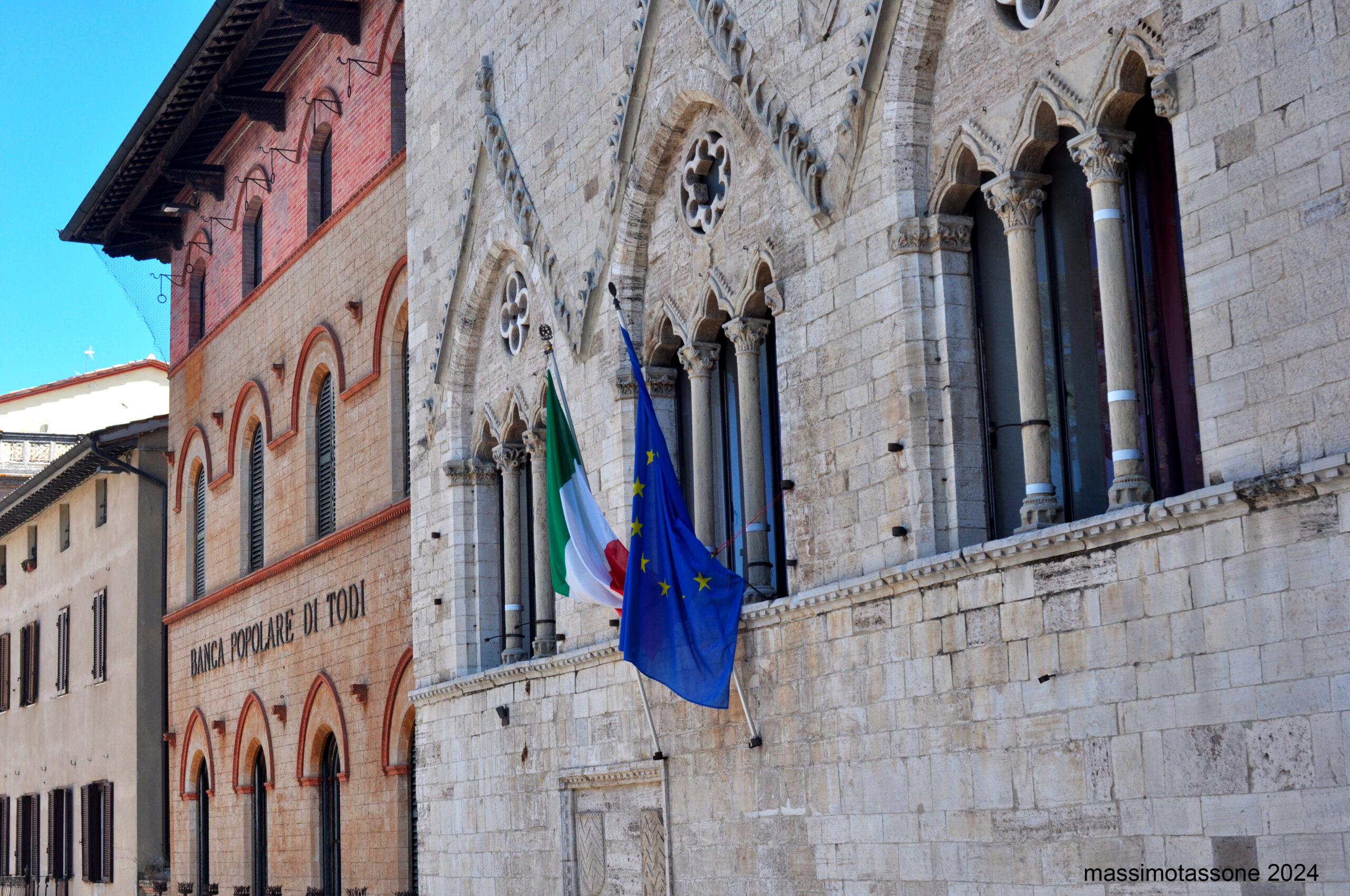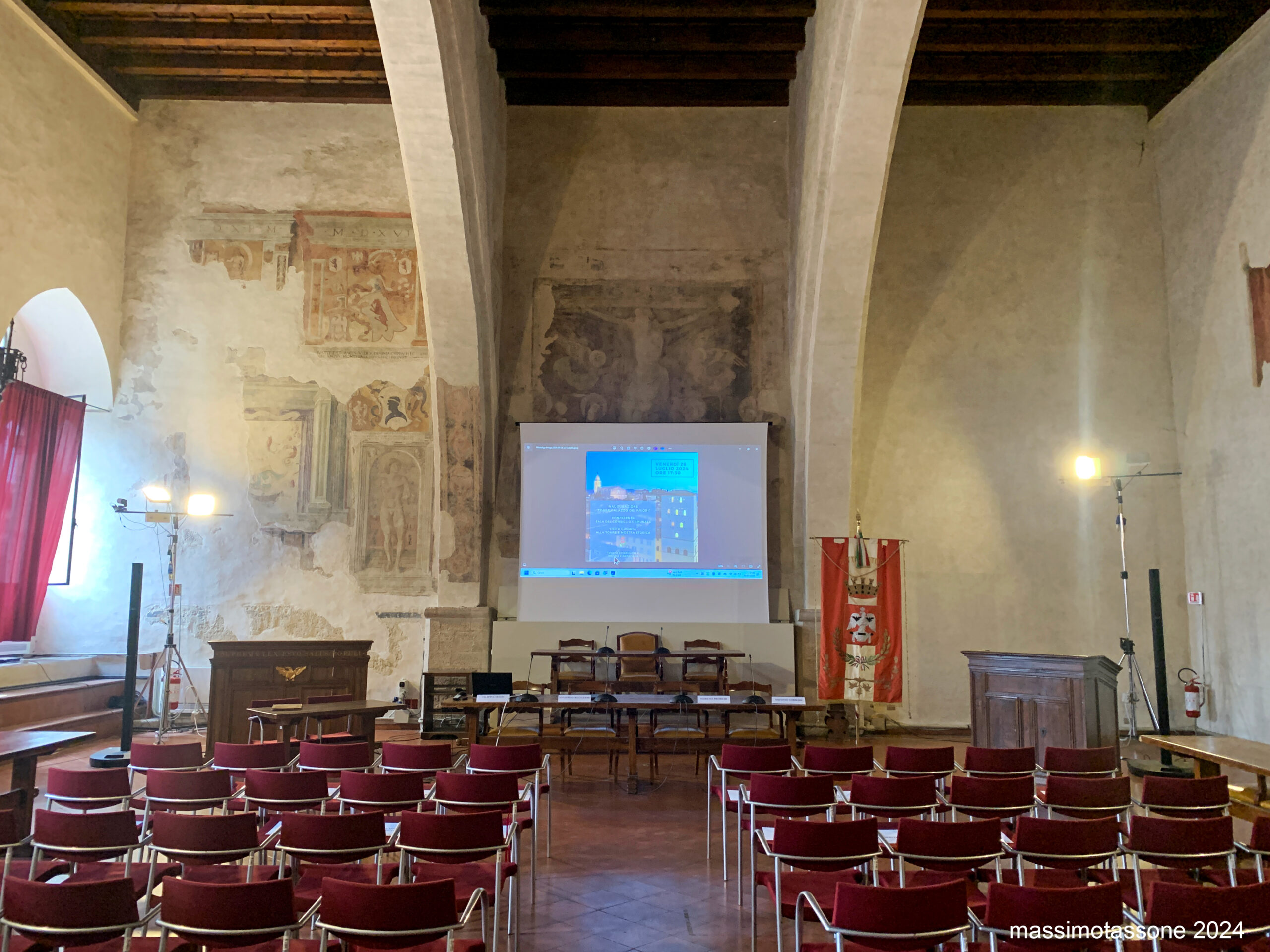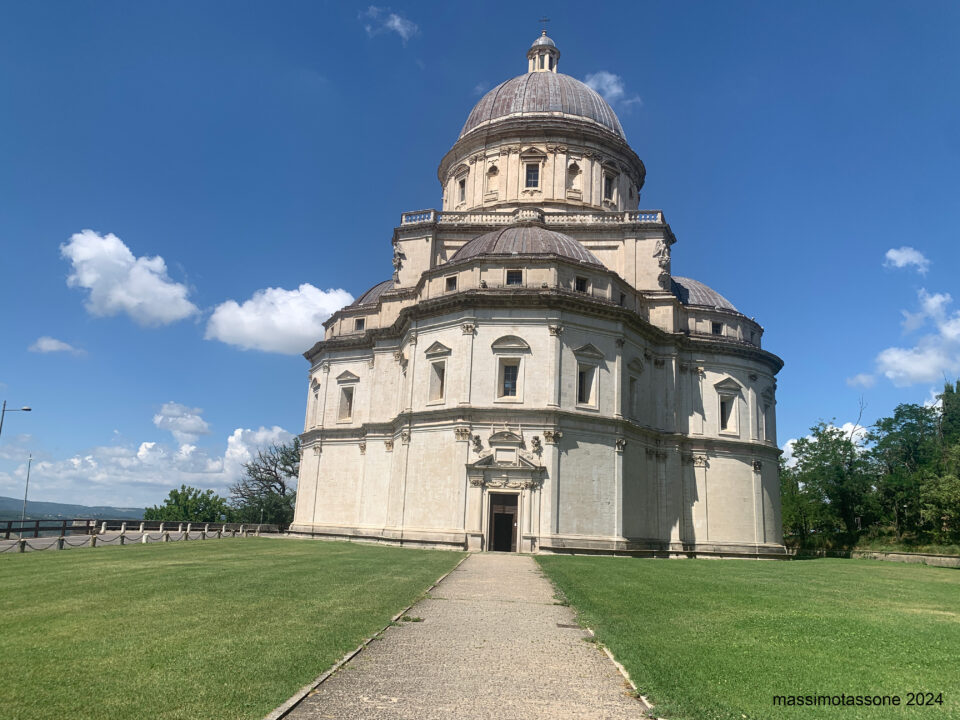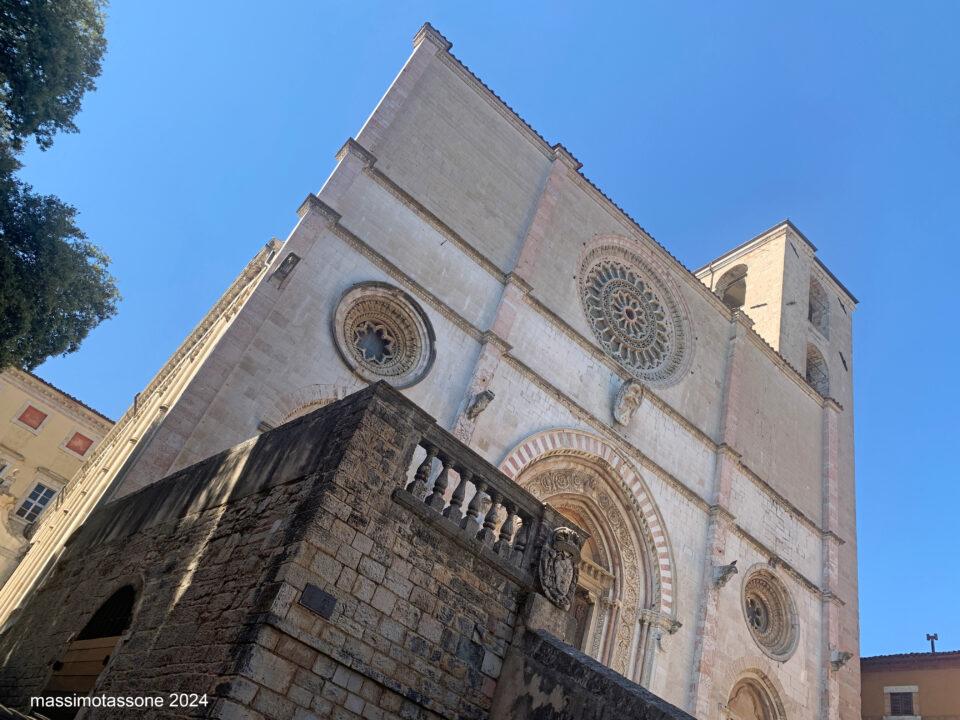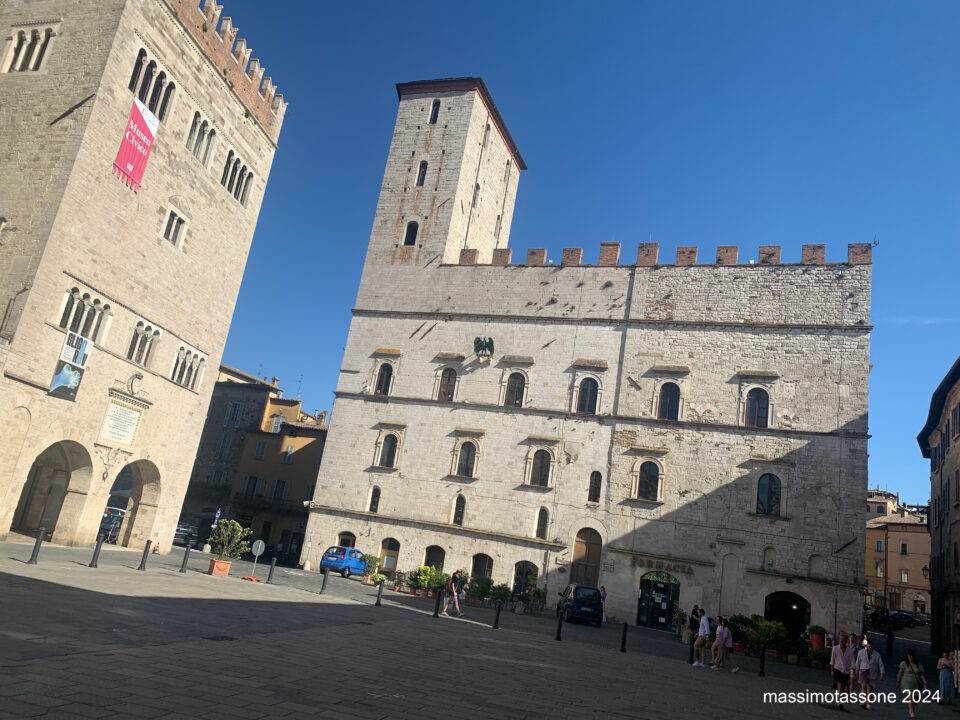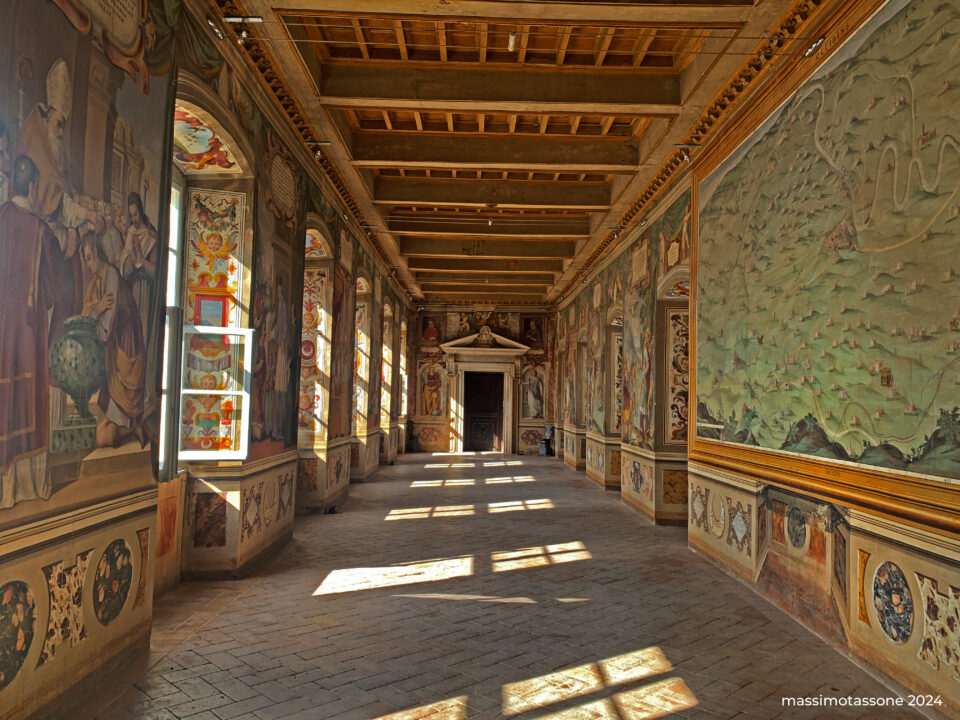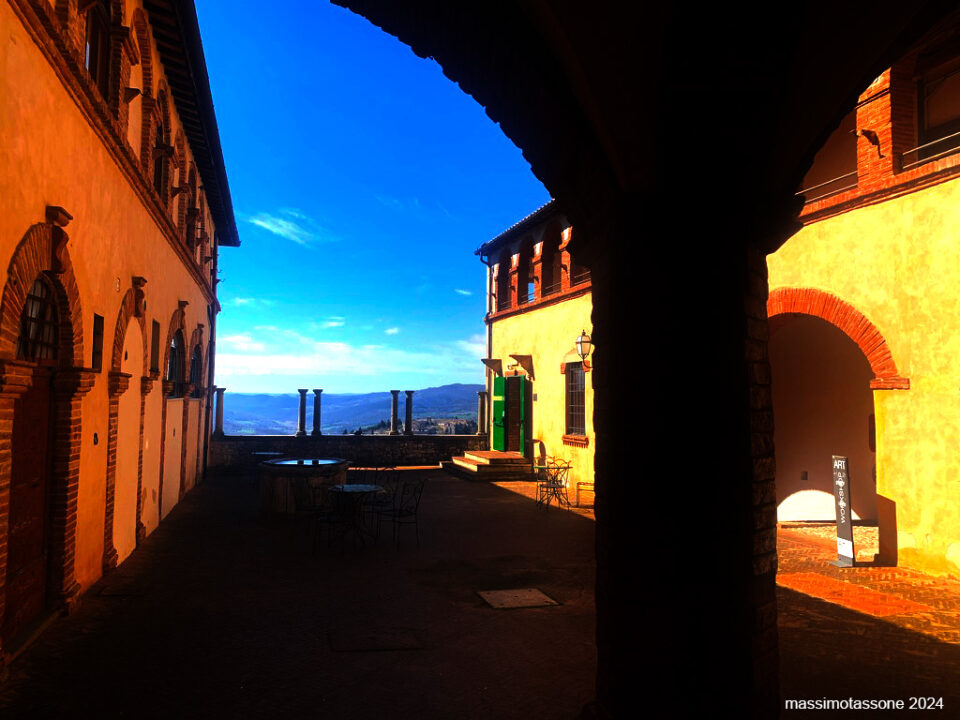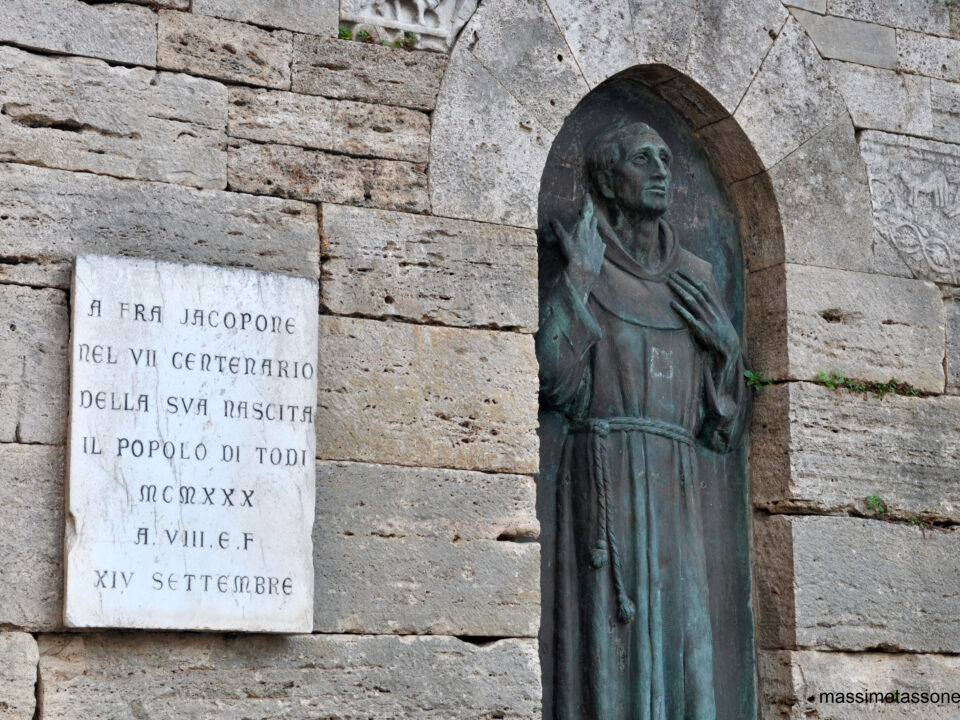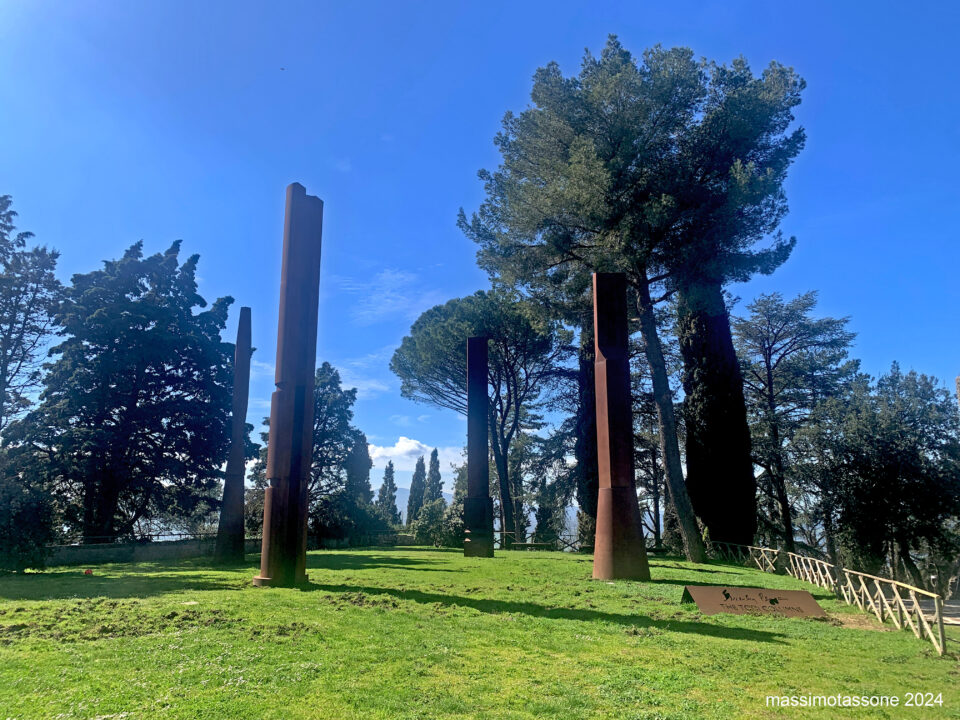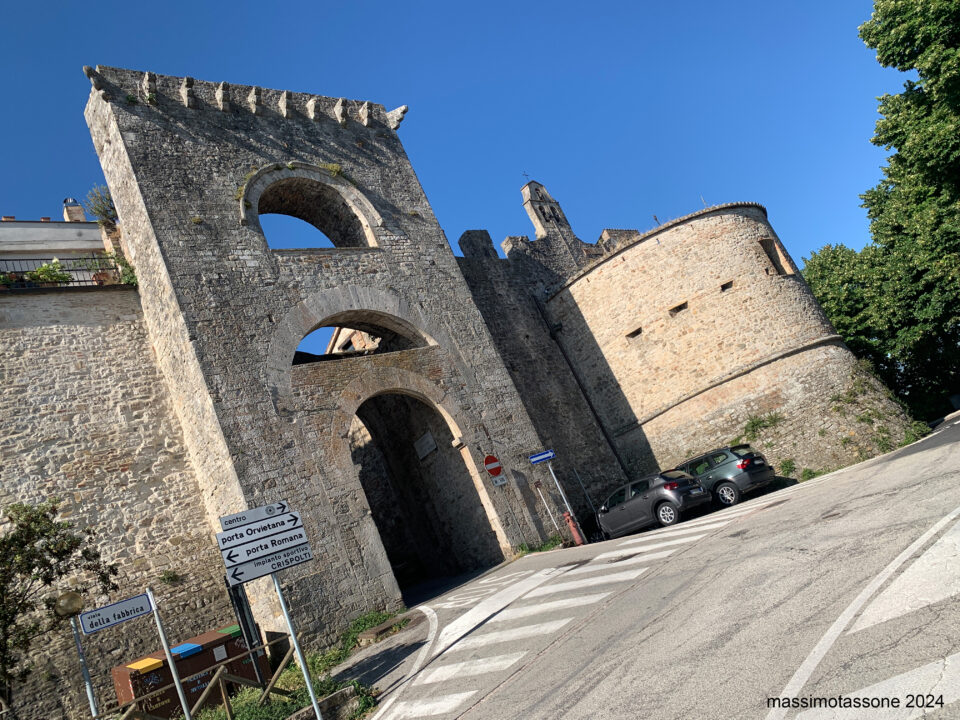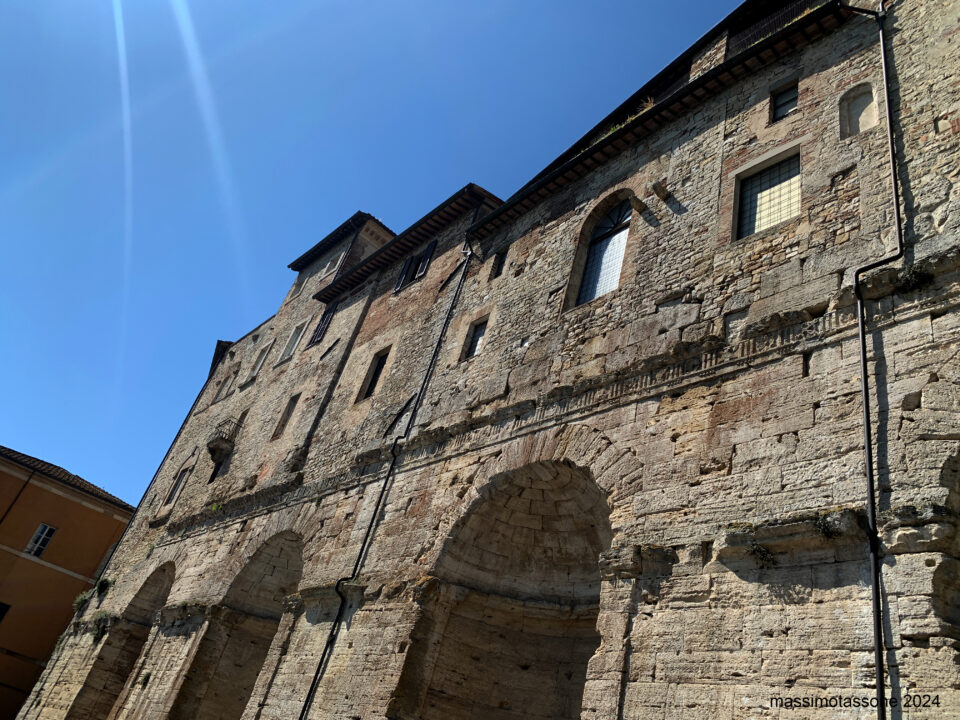Built in Italian Gothic style in 1293, it was called the "new palace of the Commune" to distinguish it from the adjacent Palazzo del Popolo.
An imposing staircase, built on the portico of the Palazzo del Popolo, serves as the access to both buildings. The large hall on the first floor, once the courtroom of the Captain, is now used as the City Council Chamber. The porticos at the base of both buildings were originally the site of the crossbowmen guarding the square and the palaces; they were later enclosed to house the rooms for the "gabella grossa" (a tax collection office), then the slaughterhouse, and the grain and oil warehouses of the "Abbondanza" (a local food storage organization). The Palazzo del Capitano is set back from the Palazzo del Popolo and features a robust ground-level portico.
The facade of the palace is remarkable for its extraordinary harmony and elegance, with three large windows on the first floor, each marked by two thin columns that support three trilobate arches. Four trifore on the second level are simpler but equally elegant, topped with semicircular arches and cornices. On the top floor of the municipal buildings is the collection of the Todi Museum-Pinacoteca.



